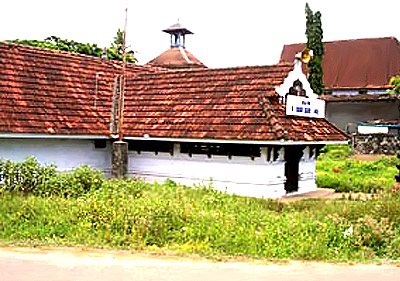 Fall of Dutch in Kerala was initiated by the invasion of Kings of Mysore headed by Hyder Ali. Kerala had come under the supremacy of the English. The king of Cochin concluded a treaty with the British on March 6, 1792. He recognised the sovereignty of the English East India Company and renounced his allegiance to the Sultan of Mysore. He had to administer his dominions as a vassal of the Company paying a tribute of Rs. 70,000 in the first year, Rs. 80,000 in the second year, Rs. 90,000 in the third year and Rs. 100,000 in all the subsequent years. The English did not want to disturb the friendly relations existing between the Dutch and Cochin. They agreed to it that the Raja of Cochin should recognize their sovereignty only in those places with which the Dutch had no concern. The Dutch had tried their maximum to prevent the extension of English influence in Malabar. In spite of their efforts the Dutch had none to recognise their supremacy in Malabar.
Fall of Dutch in Kerala was initiated by the invasion of Kings of Mysore headed by Hyder Ali. Kerala had come under the supremacy of the English. The king of Cochin concluded a treaty with the British on March 6, 1792. He recognised the sovereignty of the English East India Company and renounced his allegiance to the Sultan of Mysore. He had to administer his dominions as a vassal of the Company paying a tribute of Rs. 70,000 in the first year, Rs. 80,000 in the second year, Rs. 90,000 in the third year and Rs. 100,000 in all the subsequent years. The English did not want to disturb the friendly relations existing between the Dutch and Cochin. They agreed to it that the Raja of Cochin should recognize their sovereignty only in those places with which the Dutch had no concern. The Dutch had tried their maximum to prevent the extension of English influence in Malabar. In spite of their efforts the Dutch had none to recognise their supremacy in Malabar.
Three years later, on 17th November 1795, a treaty of everlasting friendship was concluded between the British and the King of Travancore. Through this treaty the Company allowed the Raja to control the three Taluks of Parur, Alangad and Kuttanad and agreed to protect the Raja against foreign attacks. It was also decided that all political disputes are to be decided by the Company. The king and his successors were not allowed to enter into new alliances with any European or Indian states without the previous consent of the British Government of India. He was also not allowed to permit citizens of any nation which is at war with Britain or the English East India Company to remain within his territory. This treaty made the influence of Dutch negligible in Cochin. In North Kerala they had lost all their influence when its princes and chiefs entered into new alliances with Travancore and the English. Technically the Dutch possessed their fortress at Cochin and few acres near Quilon. However even these they were not able to hold for long. When the Dutch refused to yield to the demand of the British to surrender, a force was sent under Major Petrie. As soon as they opened fire the Dutch surrendered and with that the last relic of the Dutch political power in Malabar disappeared.






